Art I Lesson Fall Semester for High School Curriculum
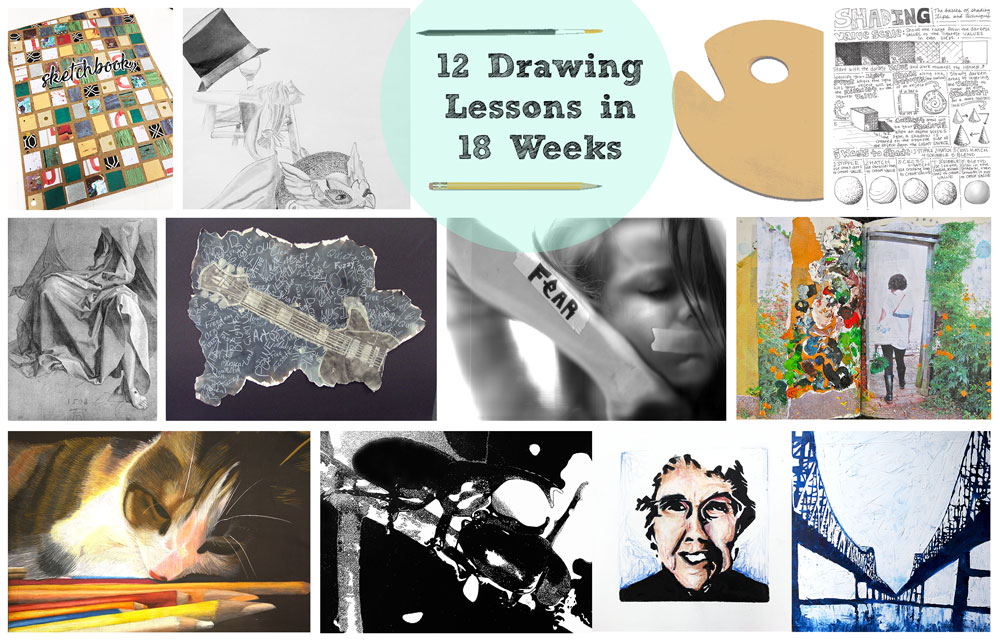
In my teaching career I have taught a wide range of art courses: Introduction to Art, Drawing, Painting, Advanced second Blueprint, AP Art, 3D Design, 3D Design Two, and 3D Blueprint III. I have loved teaching such a variety because information technology has given me the opportunity to develop and test a breadth of lesson plans. The past two years I take been working on compiling my favorite lessons into curriculum packs to sell on my Teachers Pay Teachers store. My most contempo posting on my store is my semester long cartoon curriculum pack. I accept taught every single i of these lessons (plus more that I tested, failed, and left out and so you don't have to) and these are my top twelve.
This drawing curriculum includes information and resources to fill up every unmarried day of the semester in your cartoon class. Other than making copies of worksheets and doing a handful of demos, yous don't have to plan a thing for the semester. Each project includes a detailed lesson plan (including large ideas, essential questions, national standards, vocabulary, and pace by stride instructions), rubrics, critique information, and handouts. In addition to the project packs I have included my syllabus, get to know you worksheets, a timeline, breaking downwardly the semester into days and weeks, and supply list.
Bank check out information on the individual projects below:
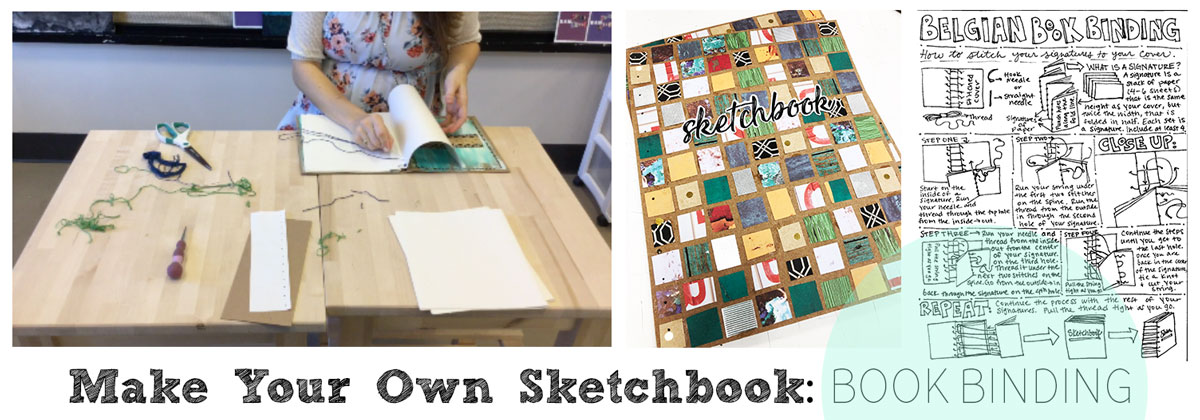
The beginning projection of the semester is learning the Belgian bookbinding technique and using it to create your own sketchbook. This non only saves money on purchasing sketchbooks, only it also introduces the students to book cover blueprint and bookbinding techniques. In add-on to a PowerPoint, lesson plan, and rubric, this likewise includes a how to worksheet and how to video. This production is sold individually here.

In every class I teach I include a weekly focus on visual journals. Each Friday students have the option to work in their visual periodical, have free fine art time, or catch upwards on an consignment. By the end of the semester they must have at least 12 pages completed in their volume. The PowerPoint to introduce this project, lesson program, and rubric are included in this pack.

Before the students kickoff longer drawing projects, they complete a shading review. 7 worksheets are included that cover graphite pencils, hatching, cross hatching, scribbling, stippling, and a general shading worksheet. The front end of the worksheets include data and the students must complete the activities on the back. This product tin be purchased individually here.

The get-go truthful drawing assignment is a still life drawing. However, I put a twist on it by requiring the students to bring in objects to create the withal life. Before starting the cartoon, the students learn virtually yet lifes at various periods in art history. at both traditional and modernistic versions of all the same lifes. They must employ their understanding of various shading techniques by including at least three of them in their drawing. Check out the private link for this production here.
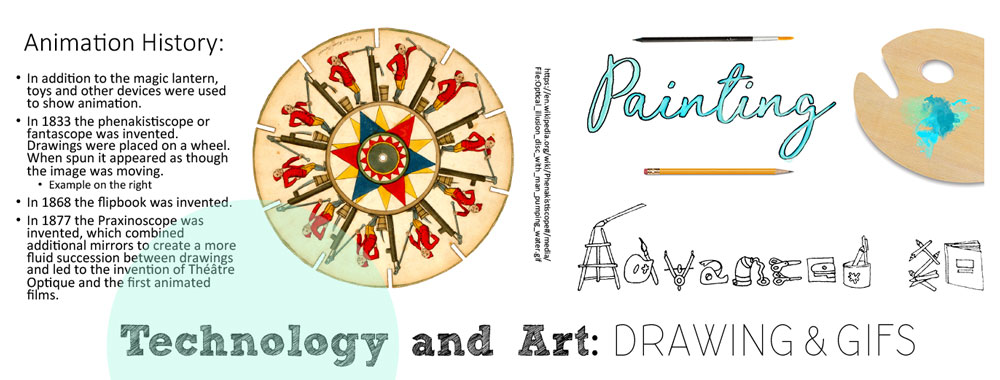

One time the class has a few drawing projects under their belt, we look at combining technology and fine art by creating their own GIFs. They must draw the bulk of the design, so use various computer programs to compile their drawings, add to them, then create an animated version of them. You tin can read more about this project in my blog mail here.
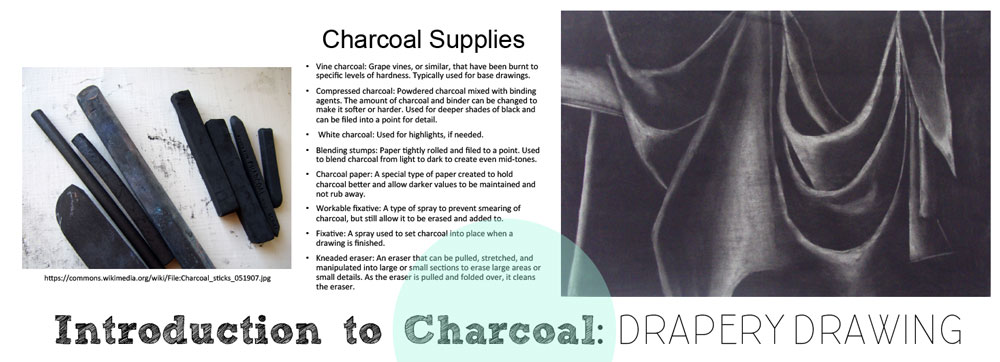
One time the students have a handle on using pencils, we move onto charcoal drawings. One of the all-time ways I accept found to teach how to shade using charcoal is through the traditional charcoal drapery drawing lesson. A PowerPoint about charcoal, in depth lesson program, rubric, and critique are included. You can purchase this lesson individually here.

Afterward learning about charcoal, the students apply their cognition to a mixed media work of art that includes shading with charcoal. For this assignment, the students must select an object and redraw it on a background layered with colour and text. The object is meant to serve as a metaphor for who they are, a part of their personality, or interests. I honey any cross disciplinary lessons, and this does a slap-up job combining English and art. Check out specifics of this project hither.

After completing a metaphorical self portrait, the students are asked to create an actual self portrait drawing, with a twist. The students must select a electric current event that interests them and reflect it through their portrait. In addition, they accept to scan their faces using a copier or scanner to create an unusual and ethereal expect to their portrait. They then re-depict their scanned image using pencil. This project pack includes multiple PowerPoints to introduce the projection and show examples of current artists who create social and politically driven artwork. In addition to the PowerPoints are an in depth lesson programme, rubric, critique sheet, and brainstorm worksheet. Check out more here.
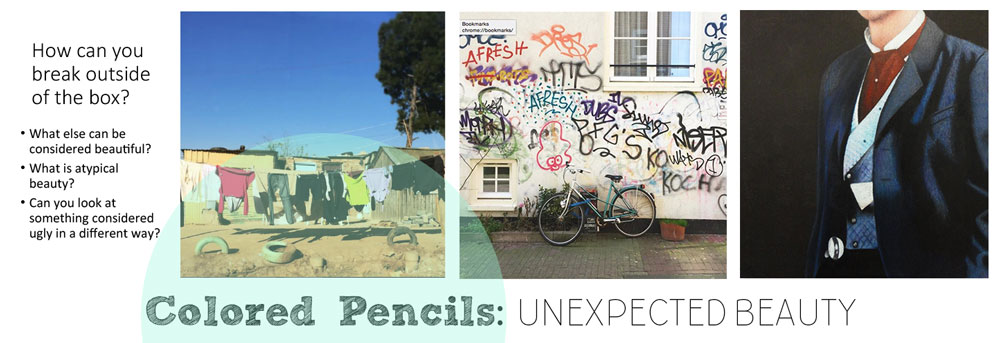
Subsequently working mostly in blackness and white, students have the chance to do a total color drawing using colored pencils. They are asked to think outside of the box and have a photograph that reflects the topic, "unexpected dazzler." They and then turn the photograph into a colored pencil drawing. Colored pencil techniques are covered in the introduction PowerPoint. Check out more information almost information technology here.

After learning about colored pencils, we outset moving towards different media that yet apply traditional drawing techniques, such as scratchboard. Social media is the focus of the lesson and students are asked to create a scratchboard prototype that reflects a snapshot of their day. History about scratchboard, as well as techniques, are included in the PowerPoint. Detailed instructions on how to teach the lesson are included in the lesson program, also as the rubric and critique sheet. This lesson can be purchased individually here.

Printmaking is a natural side by side pace later learning about scratchboard. The basic concepts are similar, removing highlighted areas and leaving dark areas. For this assignment, students create a portrait out of a linoleum cake. They use traditional relief printmaking techniques to create at to the lowest degree five quality prints and one print must be colored in using colored pencils. In addition to a PowerPoint, lesson plan, rubric, and critique canvas, this too includes a handout on which colors to use to create a range of pare tones and a worksheet to exam various color combinations. An in-depth look at this lesson will be coming soon. In the meantime, check out the production listing here.
The concluding lesson in the curriculum is design your own projection. The students tin can endeavor out a technique or textile they didn't go a chance to or redo a project they liked or could improve on.
It took me years to develop this curriculum and it is very gratifying to see it all compiled in one place. Check out the individual product links above or cheque out the unabridged curriculum here. Y'all save $16.00 by purchasing it as a parcel pack. Thanks for taking the time to cheque out my weblog and my latest TPT product. Help me spread the give-and-take virtually art pedagogy, lessons, and art in general by sharing with others. Thanks for stopping by!
Source: https://lookbetweenthelines.com/art-lessons/high-school-drawing-curriculum/

0 Response to "Art I Lesson Fall Semester for High School Curriculum"
Post a Comment